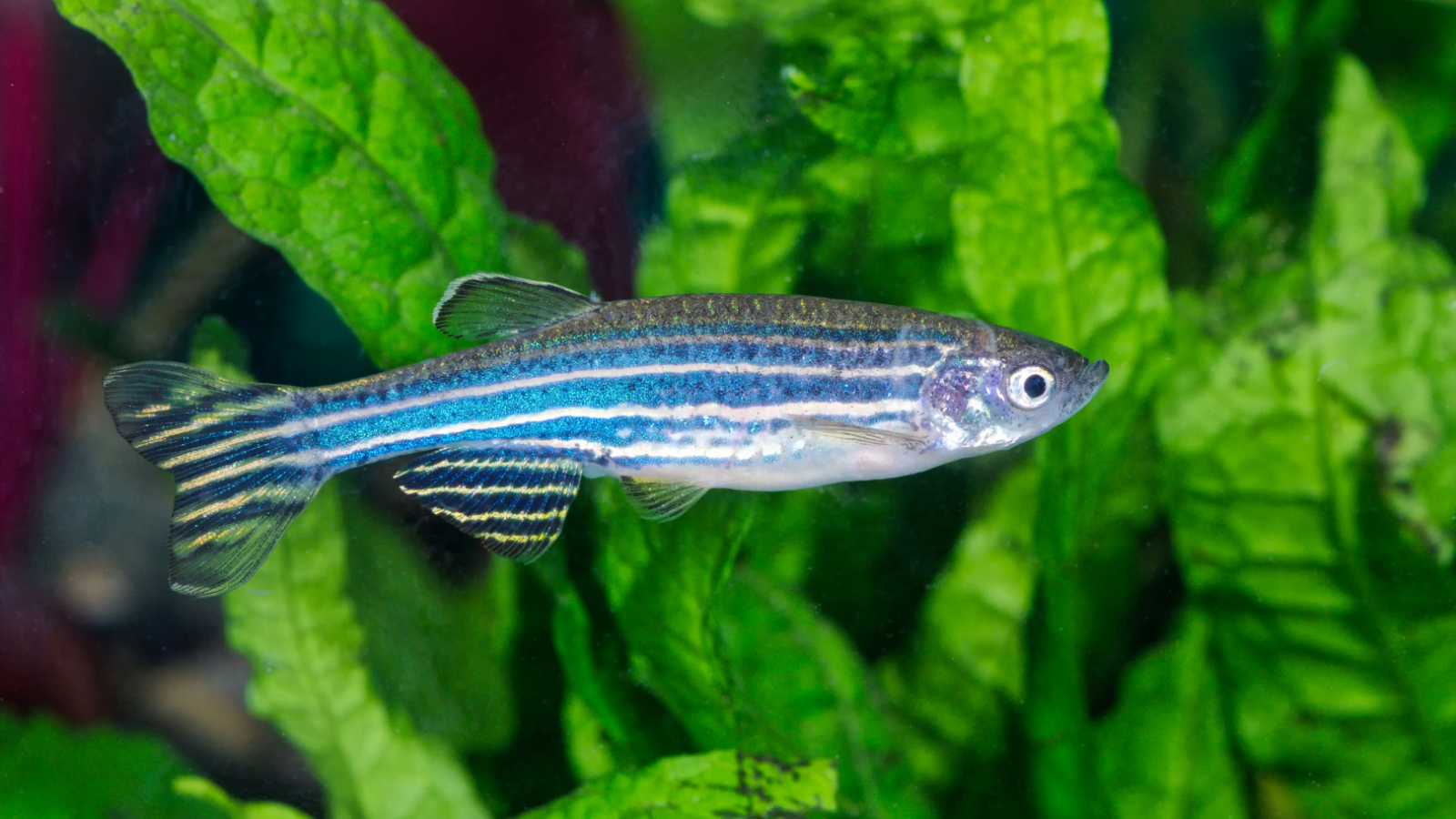1. The zebrafish is one of the most frequently used model organisms for genetic and developmental studies
The zebrafish is perhaps one of the most frequently used model organisms for genetic and developmental studies. The zebrafish is known for its unique regenerative abilities and rapid embryonic development.
The scientific name of zebrafish is Danio rerio and it belongs to the minnow family, Cyprinidae. The fish got its common name from the presence of five uniform and pigmented horizontal stripes on the side of its body, which resemble the stripes of a zebra. The characteristic stripes of zebrafish are blue in colour and they extend from the gill cover to the end of the caudal fin.
http://www.buzzle.com/articles/interesting-facts-about-zebrafish.html
2. Zebrafish embryos grow in eggs and are transparent, they can be easily viewed and manipulated
The embryos develop externally to the mother and are transparent, so they can be easily viewed and manipulated.
Compared to frogs the organization of the zebrafish embryo is simple, and they develop more quickly. Zebrafish grow to maturity and are able breed within 2 to 3 months. They also produce large numbers of offspring – a female zebrafish can lay up to 200 eggs a week.
http://www.animalresearch.info/en/designing-research/research-animals/zebrafish/
3. The sequencing of zebrafish genome began in 2011
The sequencing of the zebrafish genome began in 2001, and is currently ongoing.1 Although the zebrafish genome is only half the length of the human genome, the genetic structure is remarkably similar.
http://www.animalresearch.info/en/designing-research/research-animals/zebrafish/
http://www.animalresearch.info/en/designing-research/research-animals/zebrafish/
It is easy to produce mutations in zebrafish, and screening programmes have been developed to find mutations which affect particular biological systems, such as the development of the nervous system. Zebrafish mutants are currently used to model many human diseases, including Alzheimer’s disease, congenital heart disease, polycystic kidney disease and some cancers.
‘Zebrafish models’ for human disease is a project funded by the European commission, which began in 2004. Its aim is to use the zebrafish to produce new disease models, find new drug targets and learn more about the gene-regulation pathways involved in human development and disease. Among its research the project aims to produce 180 knockout strains of zebrafish, which will help understanding and modelling of human diseases.
http://www.animalresearch.info/en/designing-research/research-animals/zebrafish/
6. Zebrafish is one of the few fish that have been sent to space
http://www.sciencedaily.com/articles/d/danio_rerio.htm
7. Zebrafish help understand Tuberculosis mechanisms
Studies on zebrafish show that lumps caused by TB bacteria create their own network of blood vessels which can be disrupted by human medicines aimed at disrupting the blood-vessel formation (such as anti-cancer medicines). Such medicines reduced the infection burden and limited the spread of TB in the fish larvae.
http://www.animalresearch.info/en/medical-advances/research-the-news/tu/
8. Zebrafish can model human influenza virus to find treatments
Researchers at the University of Maine have created a zebrafish model of human influenza A virus (IAV) and have found treatment with anti-influenza compounds increased survival. It is hoped this model can further advance developments of treatments for the flu. Prof Carol Kim, a UMaine microbiologist, said: "The transparent zebrafish embryo allows researchers to visualize, track and image fluorescently labeled components of the immune response system in vivo, making it ideal for immunological research."
http://www.animalresearch.info/en/medical-advances/research-the-news/influenza/
9. Drunk zebrafish swim extra fast and get sober fish to follow them
Earlier studies had found that a moderate dose of alcohol makes fish more active, while a higher dose slows them down. But for this study, Maurizio Porfiri, an associate professor at the New York University Polytechnic Institute of Engineering, wanted to see how an alcohol-exposed fish would behave when it was surrounded by sober ones.
Alcohol-exposed fish swam faster in a group than they did alone. This might be because moderate intoxication makes them hyperactive, as earlier studies found; they may overreact to the stimulus of seeing other fish nearby. Moderate amounts of alcohol are also known to lower fishes’ inhibitions, making zebrafish more aggressive and less afraid of unfamiliar things (or predators). Meanwhile, the four sober fish didn’t ignore their intoxicated peer as it zipped around the tank: they followed it.
10. Zebrafish can repair its heart if the organ gets damaged
Zebrafish hearts have the ability to regenerate after damage. Zebrafish can lose up to 20 per cent of their heart muscle without long-term consequences, as they can repair the damage completely within eight weeks.
Adult mammals lack this superpower. Although some newborn mammals can regenerate damaged heart tissue, this ability vanishes as they mature. During a heart attack, heart muscle cells are deprived of oxygen and they die, leaving scar tissue. "Understanding how zebrafish regenerate [their heart] may one day help victims of heart attacks recover," says Jana Koth of the BHF Centre of Research Excellence at Oxford University , who took the photograph.




